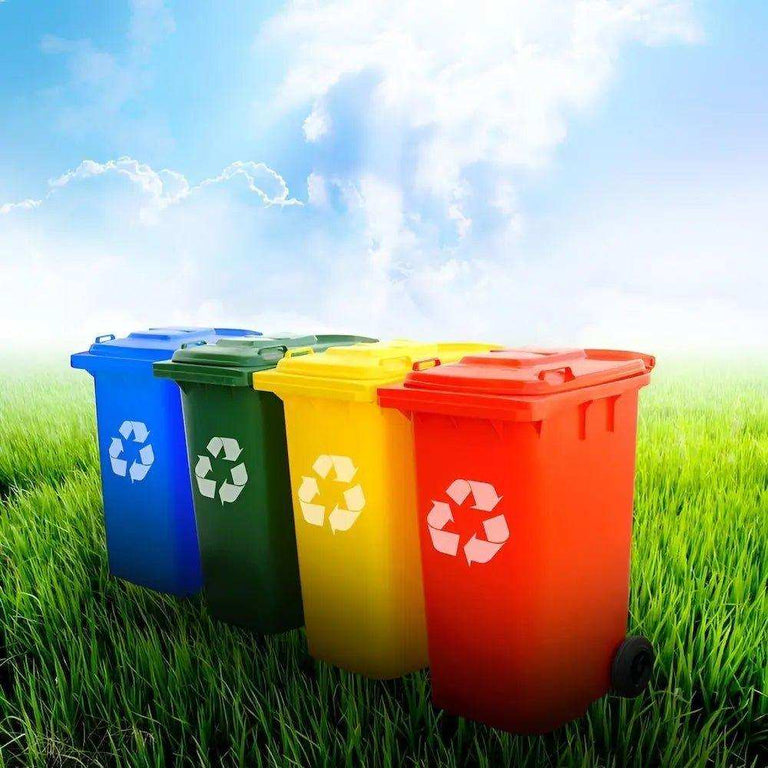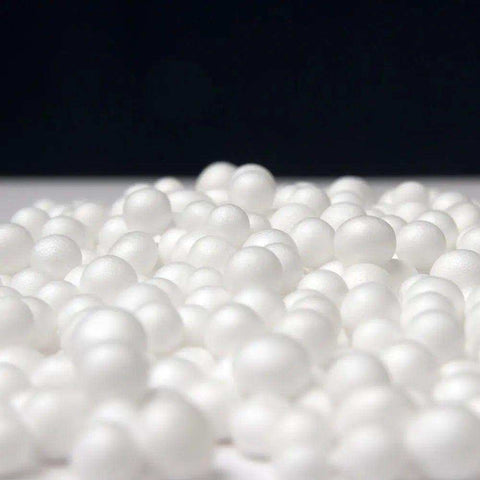Although most standard recycling centres won’t accept bean bag beads, they can be recycled or reused in several ways. Polystyrene foam is recyclable but cannot be placed in kerbside recycling bins. Polystyrene is widely used in packaging, especially as a type of plastic packaging for protecting goods. So, is polystyrene recyclable?
Is polystyrene recyclable? When it comes to bean bag filling, the answer is a confident yes. Many people assume that expanded polystyrene (EPS) – a type of plastic packaging material commonly used for filling bean bags and other packaging applications – is non-recyclable. However, that belief is outdated. In truth, EPS is both reusable and recyclable through proper channels. In this guide, we’ll show you how to recycle bean bag filler and reduce your environmental footprint.
Understanding EPS Bean Bag Fillers
Most bean bag furniture in Australia is filled with EPS beads. These tiny foam pellets are valued for their comfort, insulation, and lightweight feel. EPS is a material also commonly used in packaging for appliances, as its shock-absorbing and protective qualities help safeguard electronic goods during transport and storage. Off-cuts generated during the manufacturing process, as well as used bean bag filler, can also be recycled or reused. Over time, however, the beads compress and need refreshing. When that happens, it’s important to ask: Is polystyrene recyclable? With the right methods, it certainly can be reused or recycled efficiently.
Is Polystyrene Recyclable? Yes - and Here's How

While local curbside recycling may not accept EPS, alternative methods exist. Polystyrene foam should never be put in your recycling bin at home, as it is unsuitable for kerbside recycling due to its lightweight and bulky nature. Instead, check with local recycling services in your area to find out if there are drop-off locations for polystyrene packaging and other EPS products. Both households and businesses can utilise these recycling solutions to dispose of large quantities of EPS, whether at home or in the workplace. Collected EPS is processed by manufacturers and transformed into new products such as waffle pods for construction and other sustainable product applications. Recycling services often require materials to be free from contaminants such as labels, glue, or other foreign substances, as these can contaminate the recycling stream. Proper polystyrene recycling helps prevent EPS from entering the environment and causing pollution. Taking the time to sort and clean EPS before recycling ensures that it can be processed effectively. Polystyrene packaging is widely recycled through dedicated programs, and businesses and workplaces can arrange for the collection of large quantities at work. Manufacturers participate in stewardship programs to collect and recycle EPS products, supporting sustainable practices.
You can repurpose the filler yourself or deliver it to approved EPS recycling facilities. The key is keeping it clean and dry. Let’s explore smart, sustainable ways to recycle bean bag beads. Additionally, if you’re unsure about how to dispose of a bean bag chair, this guide will assist.
1. Refill Other Bean Bags
EPS beads can be reused to refill sagging or underfilled bean bags. Unzip the old cover and replace it with a new one. This keeps waste out of landfills and saves money. It also improves comfort instantly. Reusing filler is one of the simplest answers to whether polystyrene is recyclable in everyday life.
2. Use in Crafts and DIY Projects
EPS bean bag filler is ideal for plush toys, DIY coolers, and insulation. If you're into crafting, these beads make excellent stuffing. Just ensure they're sealed securely. You can even double-stitch toys for added safety around children. Discover how to remove static from bean bag filling for cleaner and easier crafting.
3. Improve Your Garden
EPS is 98% air, making it a lightweight soil additive. In container gardens and raised beds, it aids drainage and reduces soil volume. Mix it with potting soil instead of pebbles or perlite. Some worry about chemical leaching, but EPS is inert and doesn't leach toxins. So, is polystyrene recyclable in gardens? It's reusable and safe in containers.
More Smart Ways to Reuse EPS
4. Ship with Reused EPS
EPS makes an excellent packing filler. If you're mailing items, place the pellets in shopping bags before adding them to your box. This reduces mess from static cling and protects the contents of the package. It's a simple answer to whether polystyrene is recyclable through practical reuse.
5. Offer It to Others
Unused filler can be useful to others. Post your clean EPS beads on platforms like Facebook Marketplace, Craigslist, or Gumtree. Crafters, gardeners, and small business owners often look for affordable EPS. It's an easy way to extend its life and avoid landfill disposal.
6. Take It to a Recycling Centre
Over thirty-one countries have signed international EPS recycling agreements. In Australia, find a local centre via Planet Ark or EPSA.org. Recycled EPS is transformed into synthetic timber, insulation, and more. Recycled polystyrene foam is melted down and transformed into new products. In the U.S., explore Recycle More Plastic's directories. Wondering again, is polystyrene recyclable? Absolutely—with the right access.
Why EPS Needs Special Handling
EPS doesn’t decompose easily. A single bead can take more than 1,000 years to break down. Polystyrene foam takes hundreds of years to break down in a landfill. This durability is useful in products, but harmful when landfilled. If not properly disposed of, EPS can enter the environment, where it contributes to pollution. That’s why EPS must be reused or recycled responsibly. Disposing of waste without recycling contributes to long-term pollution.
Innovative Alternatives and Green Options
Eco-conscious consumers are opting for bean bags made with eco-friendly fillings. Options include shredded fabric, recycled foam, and biodegradable materials. Still, EPS remains one of the lightest, safest, and most reusable fillers available today. Is polystyrene recyclable as we look to the future? Yes, especially when paired with innovation.

Tips for Safe EPS Use at Home
- Store EPS beads in sealed plastic containers
- Keep away from pets and small children
- Do not microwave or burn EPS
- Use a funnel when refilling bean bags
- Clearly label reused filler to prevent mishandling
Conclusion: Is Polystyrene Recyclable?
EPS bean bag filler should not be sent to a landfill. Expanded Polystyrene (EPS) can occupy a significant amount of space in landfills. Whether you repurpose, donate, or recycle it, you're helping to reduce waste and protect the environment. Is polystyrene recyclable? Yes—and the more we understand how, the more effective our recycling becomes. With the right steps, polystyrene can be part of a sustainable lifestyle. As awareness grows, more people will opt for responsible disposal and reuse methods.
For more advice or to purchase environmentally conscious bean bags and refill options, visit Bean Bags R Us. We're committed to sustainability, comfort, and innovative solutions that help protect the planet.





